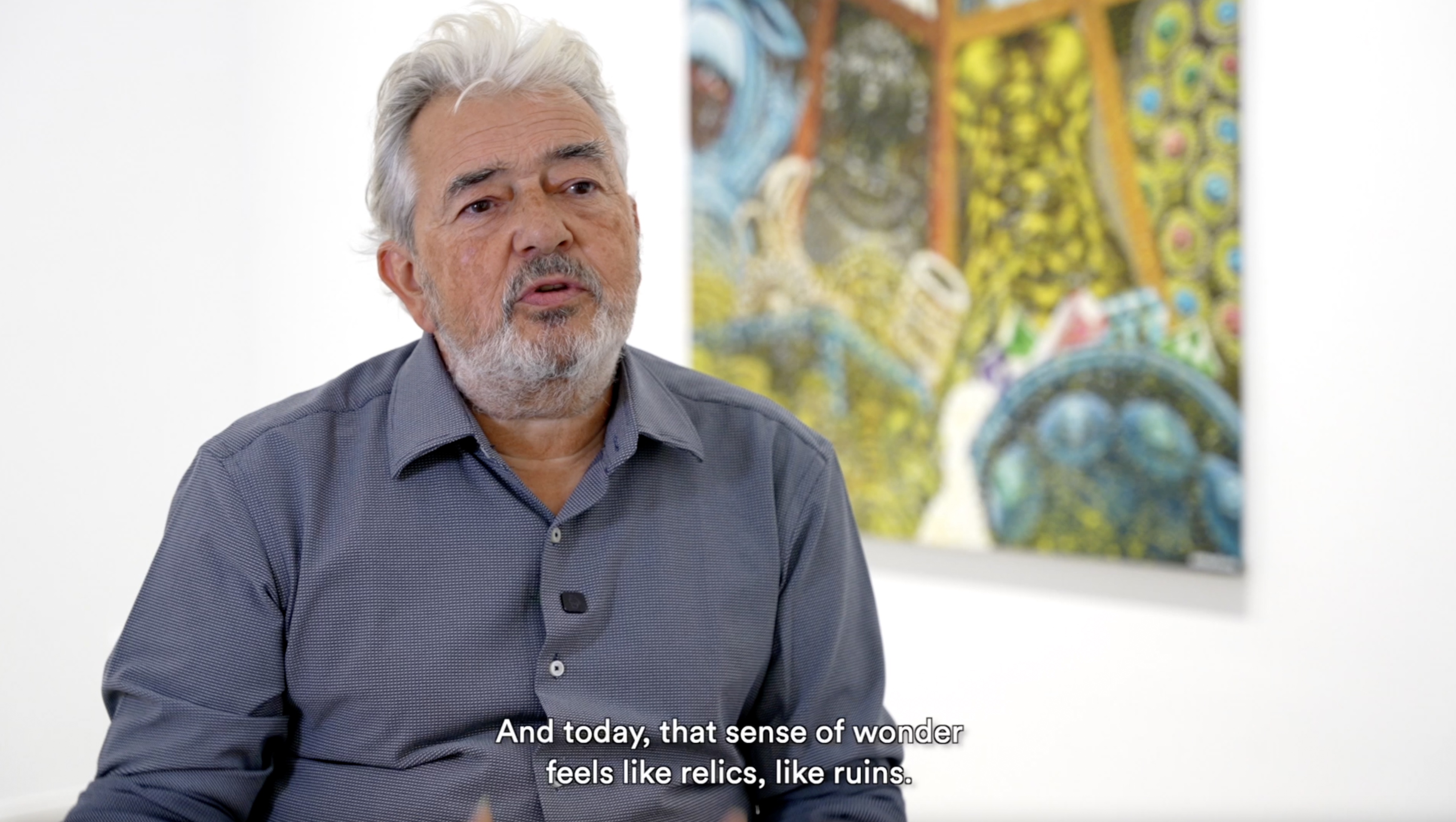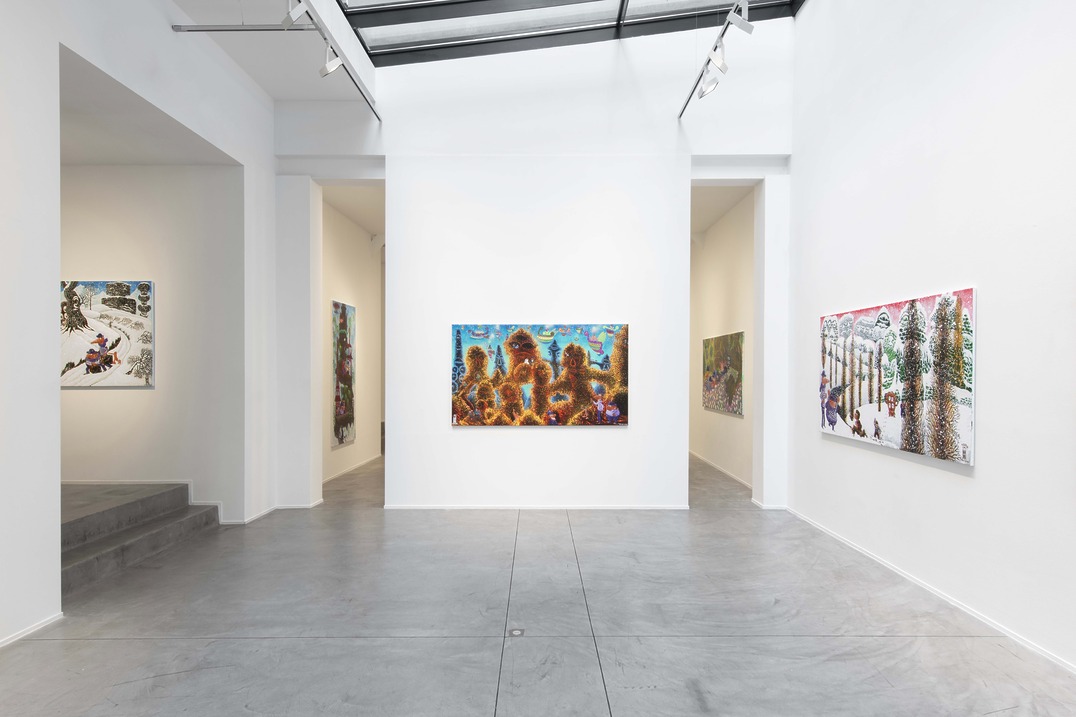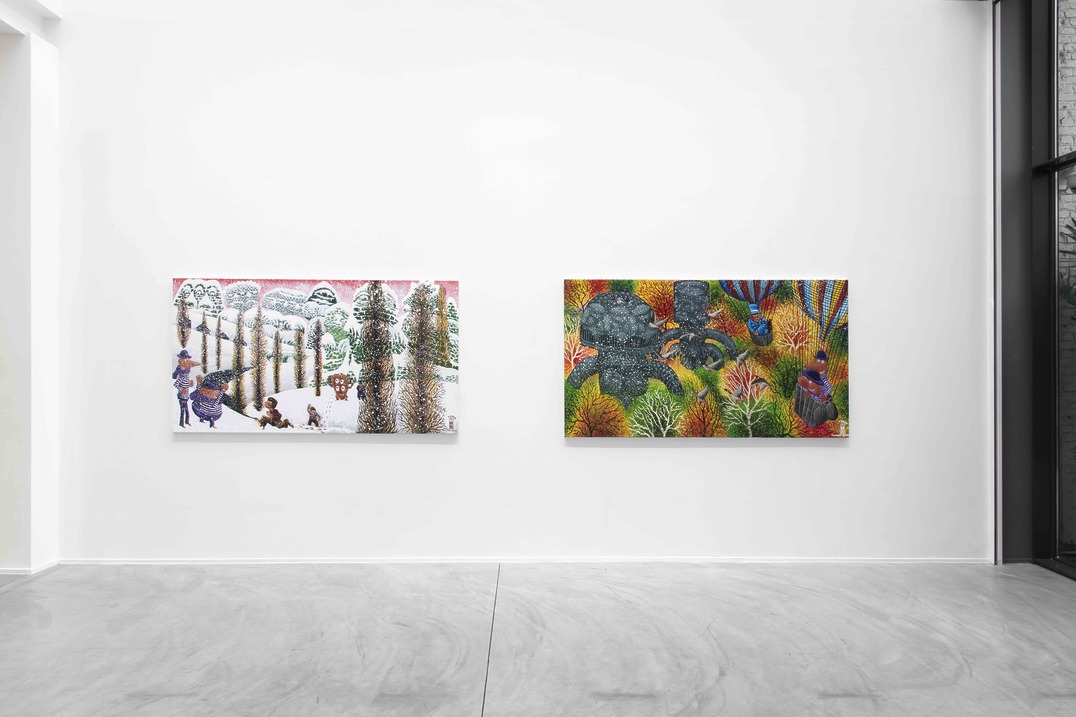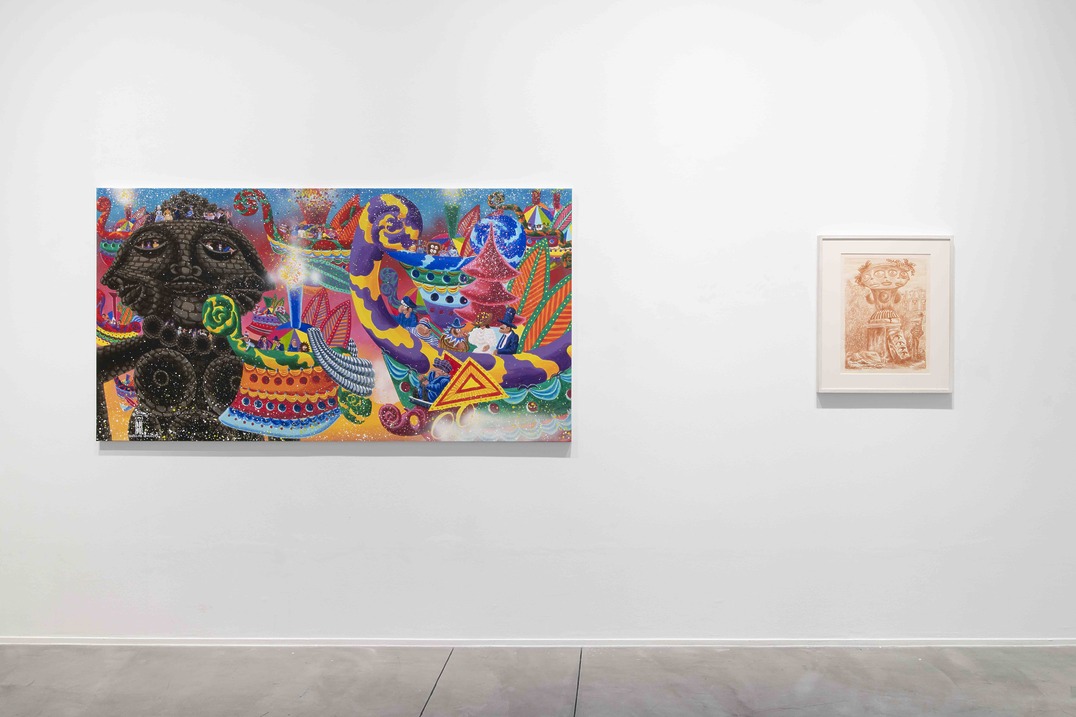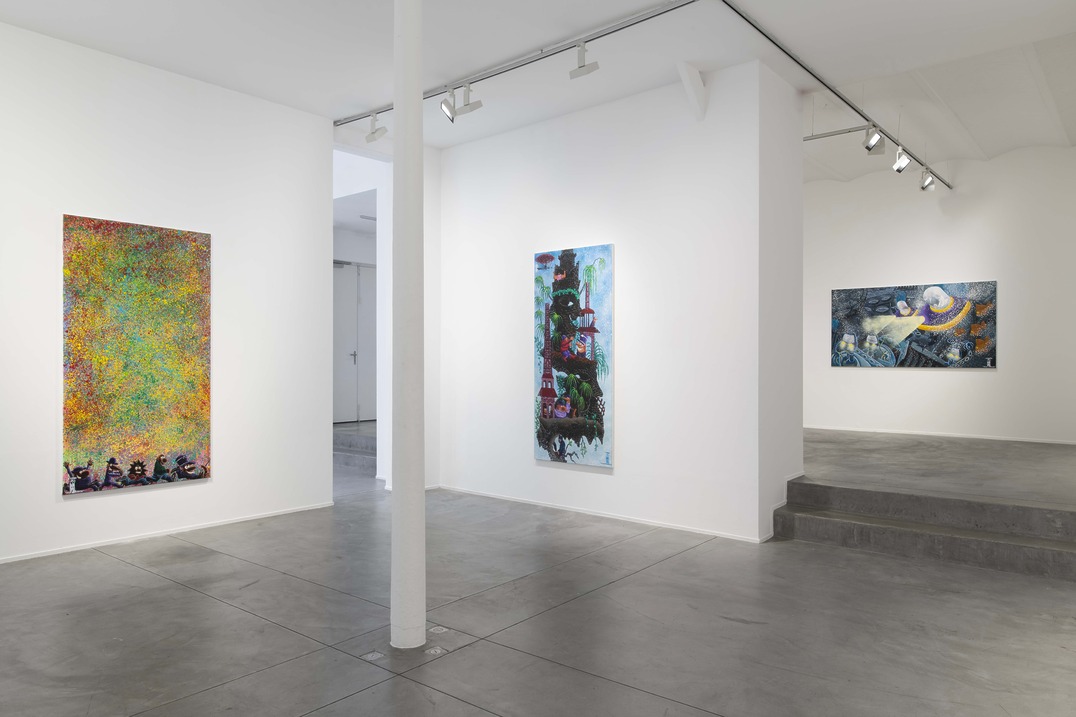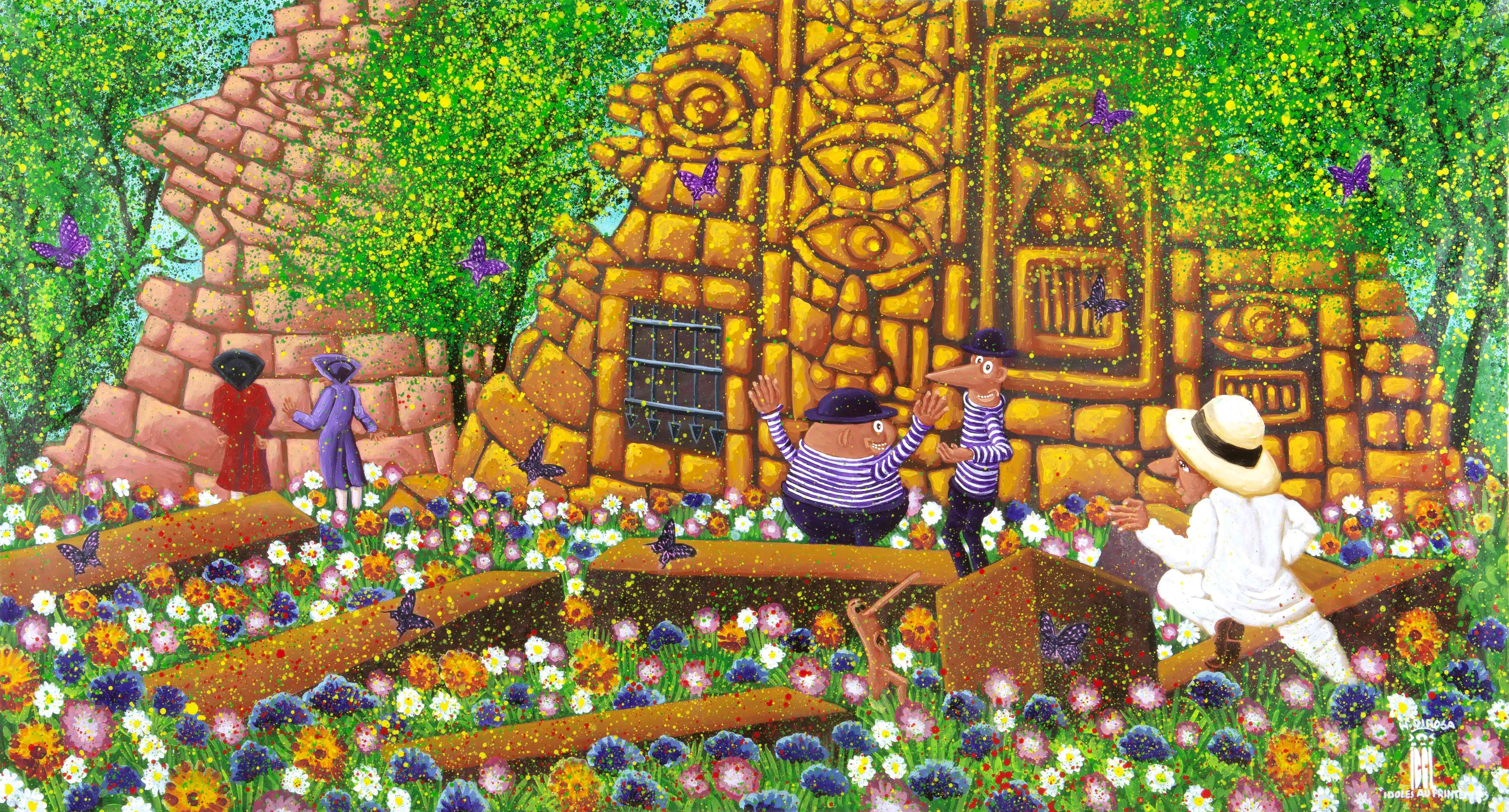
Hervé Di Rosa
Idolâtries
For the very first time in Belgium, GALERIE TEMPLON is proud to present HERVÉ DI ROSA in its Brussels space with the exhibition IDOLÂTRIES.


This second chapter of a cycle initiated in Paris with Idoles et trésors confirms the vitality of an oeuvre which, for more than forty-five years, has sought to dismantle disciplinary boundaries and to reconcile popular culture with the legacy of art history.
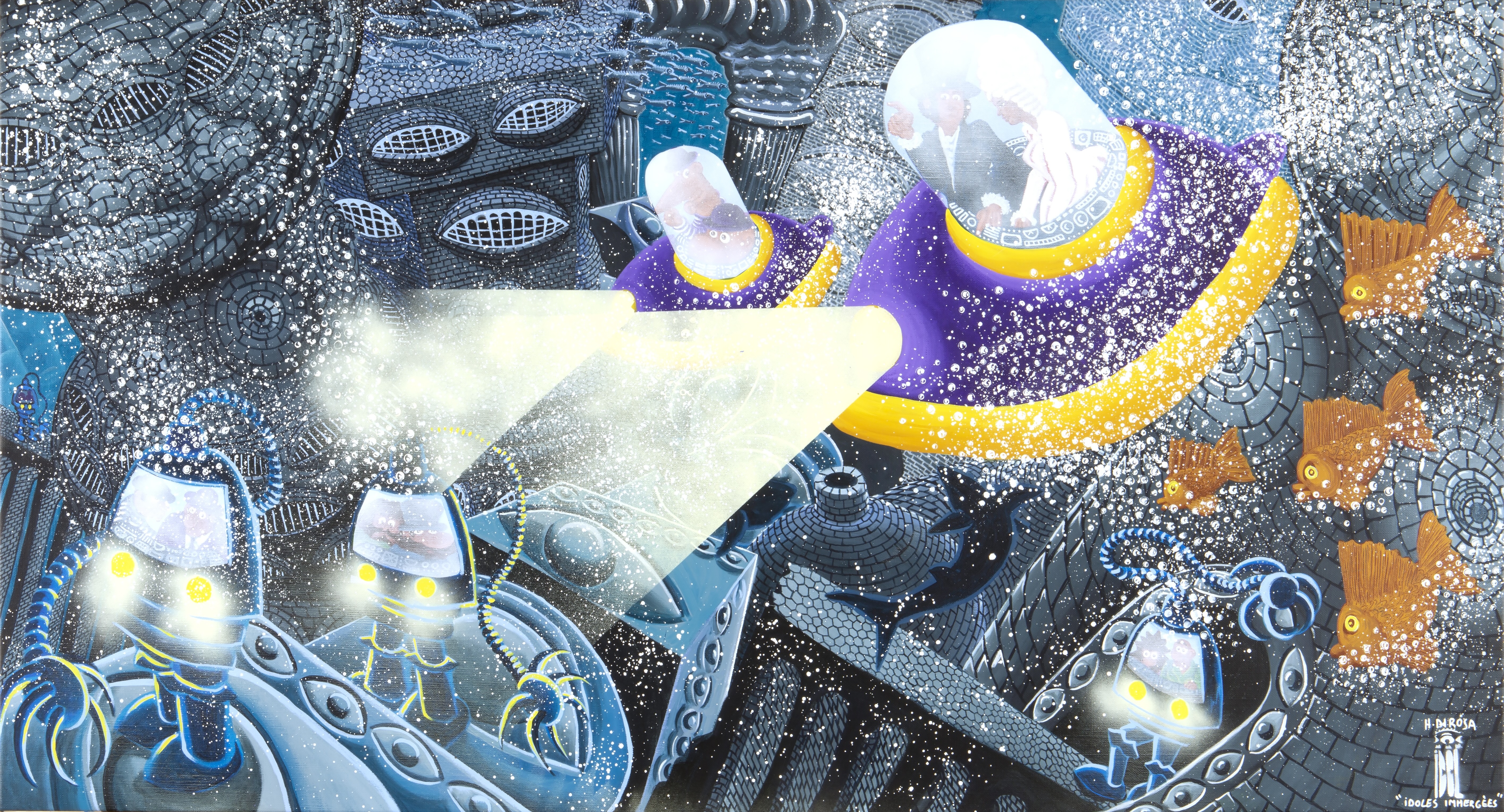
A central figure of the French artistic movement Figuration Libre, Di Rosa invents worlds where the grotesque contests the marvellous, where comic strips cross paths with the shadow of Brueghel, where African sculpture enters into dialogue with the Flemish Renaissance. In Brussels, he irreverently revisits Brueghel’s monumental cycle of the seasons: snowy landscapes, fairy-like ruins, and chimerical architectures become the stage for an unbridled mythology, saturated with colour and populated by jubilant, often trivial figures.
The exhibition extends beyond painting: ceramic sculptures created in Cameroon and Portugal are presented alongside vast canvases, abolishing any hierarchy between image and object, fine arts and so-called minor arts. In this deliberate polymorphism, Di Rosa scrambles the maps of artistic orthodoxy and reaffirms the legitimacy of all forms of expression.
A great traveller and keen observer, he summons memories of Mexico and Cameroon as readily as the visions of Piranesi or Hubert Robert to weave a fractured narrative, stripped of moral constraints. At the hour of the “twilight of the idols,” the artist from Sète seeks “to reconnect with grand painting” and to assert himself anew as a reinvented master of landscape.
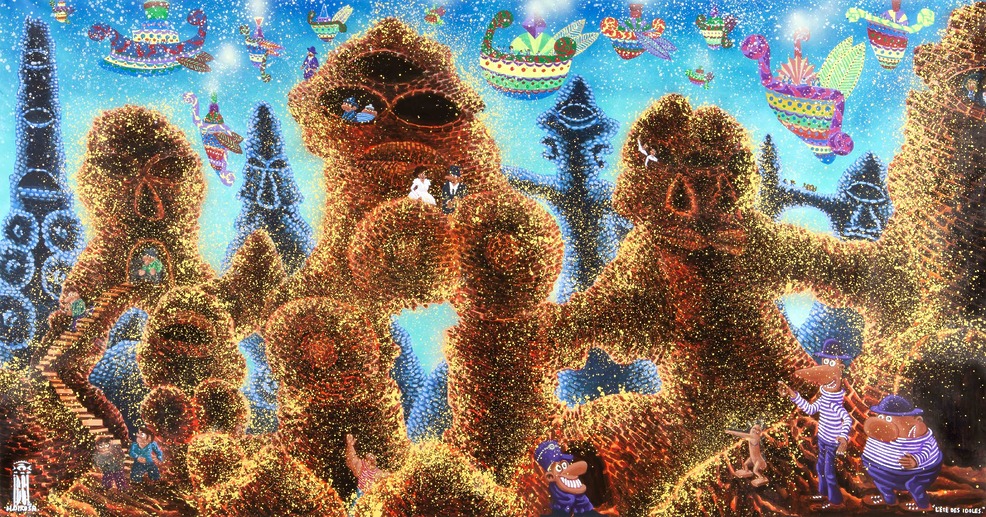
L’ÉTÉ DES IDOLES
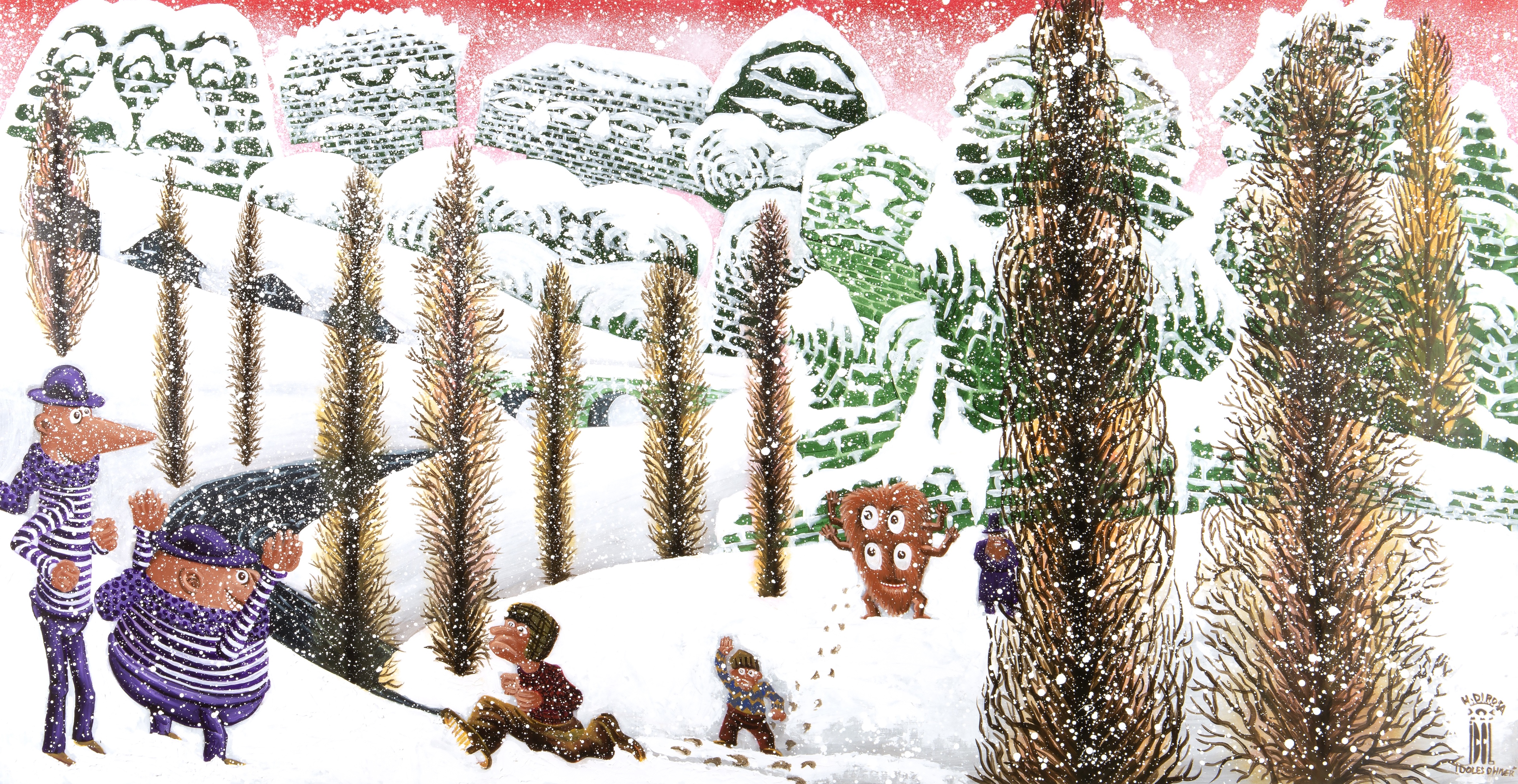
The artist
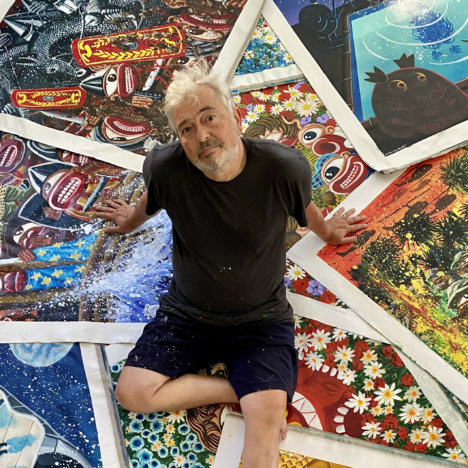
Born in 1959, Hervé Di Rosa lives and works between Lisbon, Paris and Sète.
A student at the École Nationale Supérieure des Arts Décoratifs in Paris, Hervé Di Rosa began selling his paintings in 1979. At just 20 years old, he was already exhibiting in Paris, Amsterdam and New York. In 1981 he co-founded the art movement Figuration Libre, as named by the artist Ben. This group, which included Robert Combas, Rémi Blanchard and François Boisrond, echoed other marginalized forms of international expressions, from Neo-expressionism and New Fauves in Germany to the Transavantgarde in Italy and even Bad Painting in the United States.
A pioneer and champion of the concept of “Modest Art”, Di Rosa founded the Musée International des Arts Modestes (MIAM) in 2000 in Sète. The museum exhibits a wide range of artists from all over the world and creates shows that question the boundaries of contemporary art.
Hervé Di Rosa has been a member of the Académie des Beaux Arts since 2022.
